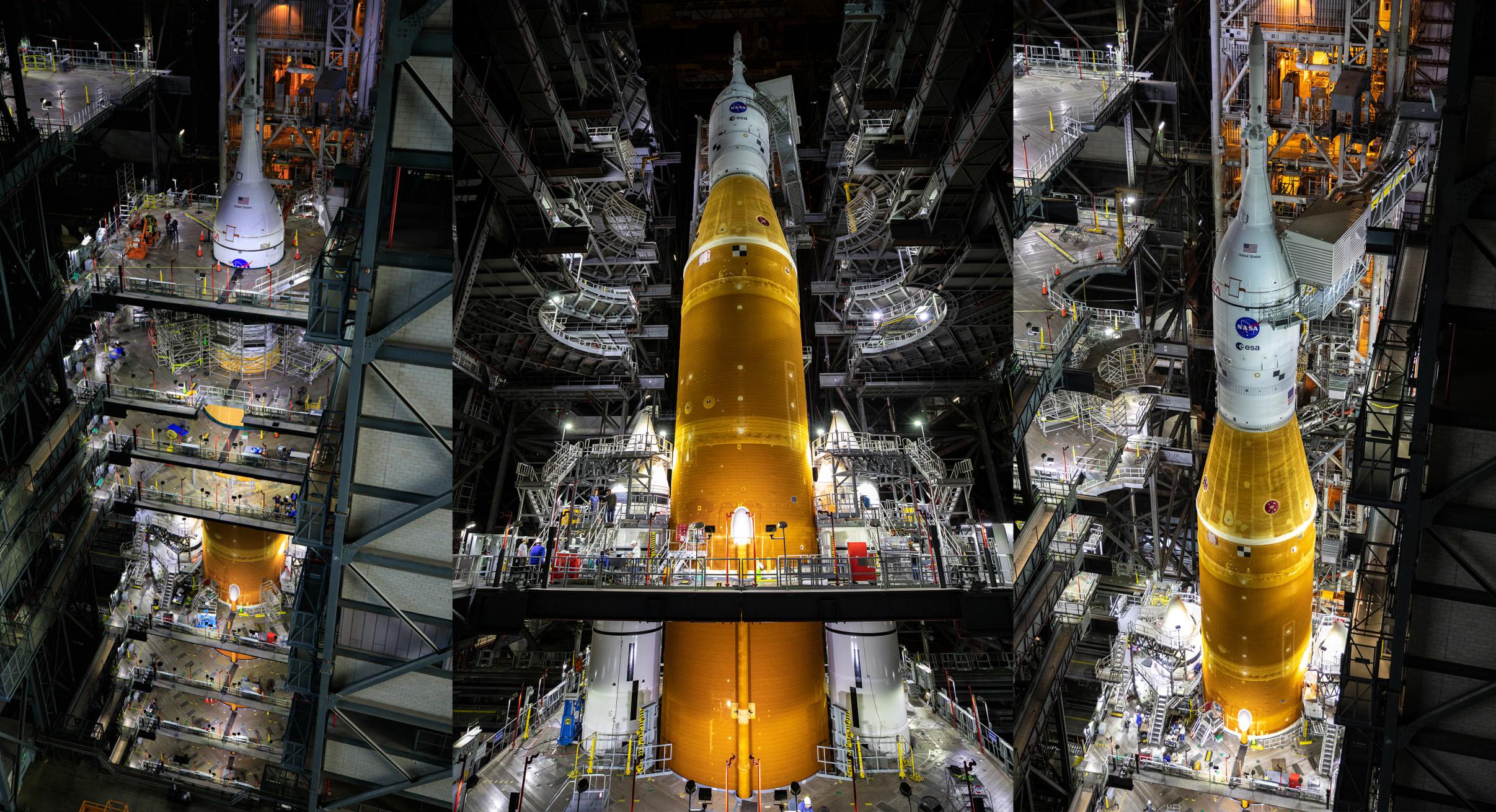
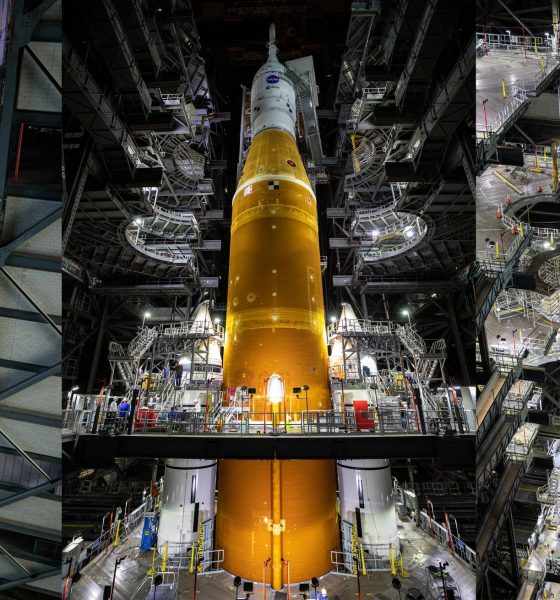
News
NASA’s SLS Moon rocket is almost ready for its first trip to the launch pad
NASA says its first complete Space Launch System (SLS) rocket is less than a week away from its first rollout and the start of its first East Coast ‘wet dress rehearsal’.
Teams have begun retracting work platforms surrounding the fully stacked rocket, slowly revealing the launch vehicle assigned to Artemis 1 – a much anticipated and extensively delayed uncrewed test flight of the SLS rocket and Orion spacecraft. Since April 2021, SLS and Orion have been slowly but surely assembled within the Vehicle Assembly Building (VAB) at NASA’s Kennedy Space Center in Cape Canaveral, Florida.
Preparing the rocket for the launch pad has required an arduous and complex series of tests meant to ensure that the vehicle is ready for the stresses it will experience and the operations it will perform before and during launch. The rollout is expected to begin around 5 pm EST (22:00 UTC) on Thursday, March 17th and, if all goes well, it should take the giant crawler tasked with carrying the rocket and ‘mobile launch platform’ about 12 hours to carry them to Launch Complex 39B (LC-39B or Pad 39B). The first hour of the rollout will extricate the rocket and its mobile launch tower from the VAB, followed by an 11-hour journey to the pad.
NASA says SLS will spend around one month at Pad 39B, during which it will undergo expensive testing required to ensure its launch readiness. After two weeks on the pad, SLS will have its tanks filled with liquid hydrogen (LH2) and liquid oxygen (LOx) propellant and run through a simulated countdown in a process known as a wet dress rehearsal (WDR). Representatives of the Artemis-1 mission indicate “the countdown will end at about [T-minus 9 seconds], which is just moments before the rocket’s four RS-25 engines would ignite [before] an actual launch.” By allowing the countdown to run so low, test teams are able to check all interfaces (aside from the rocket’s RS-25 engines) that must be carefully coordinated during launch.
Once the wet-dress is complete, SLS will be rolled back into the VAB for final launch preparations, including the identification and repair of any issues found during wet-dress, final Orion spacecraft work, and flight software updates. After SLS’ return to the VAB, NASA expects that final work to take one month to complete. However, NASA officials admit that there is still a lot of work to be done to SLS before launch, and almost every aspect of the space agency’s work on the rocket over the last two and a half years has run into extensive delays.
An official launch date has not been chosen by NASA, as delays continue to make setting a specific date impractical. Tom Whitmeyer, NASA deputy associate administrator for exploration systems development, has indicated that a launch in April is no longer feasible. “We’re still evaluating the tail end of the May window,” he said, which runs from May 7 to 21. Future launch windows, governed by orbital mechanics and other mission constraints like ensuring that Orion is recovered in daylight, are June 6 to 16 and June 29 to July 12, with a “cutout” of July 2 to 4, when a launch would not be possible.
The Artemis-1 mission will be the first uncrewed integrated flight test of NASA’s Orion spacecraft and Space Launch System rocket. The SLS rocket is designed for missions beyond low-Earth orbit carrying crew or cargo to the Moon and beyond. At liftoff, it will weigh approximately six million pounds (~2700 tons) and produce around 8.8 million pounds (~4000 tons) of thrust.

News
Tesla FSD V14.2 starts rolling out to initial batch of vehicles
It would likely only be a matter of time before FSD V14.2 videos are posted and shared on social media.
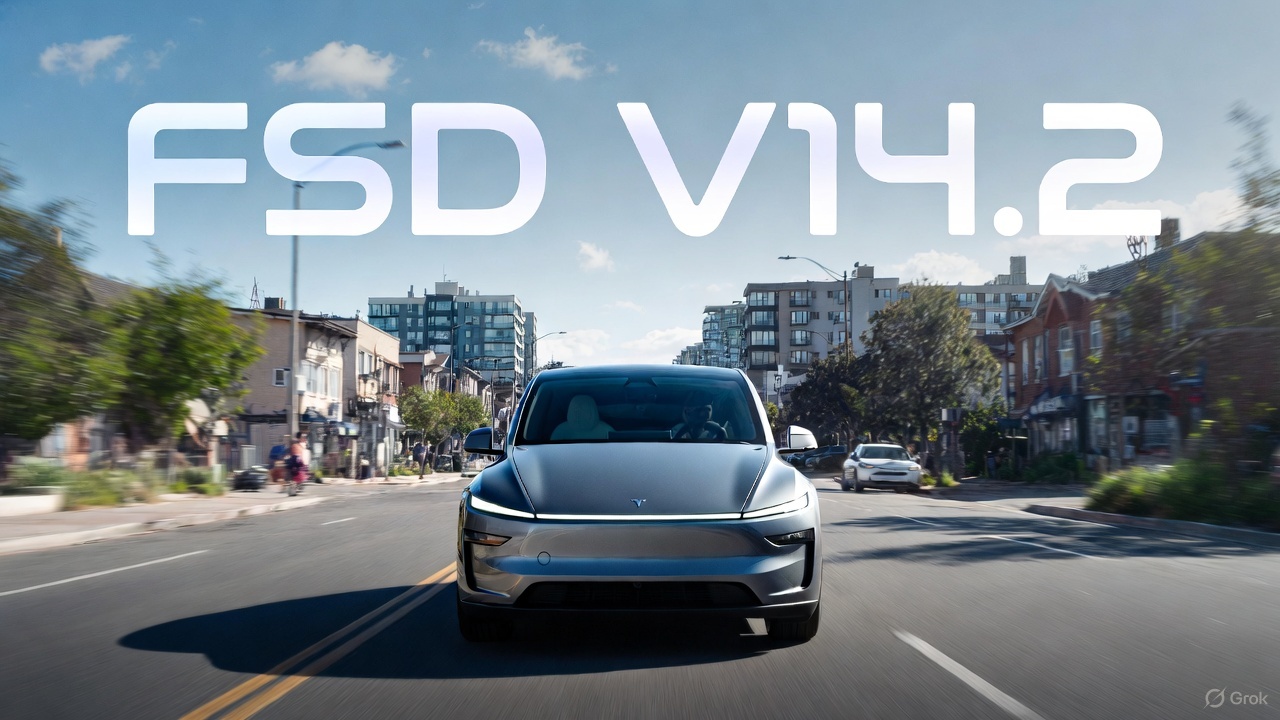
Tesla has begun pushing Full Self-Driving (Supervised) v14.2 to its initial batch of vehicles. The update was initially observed by Tesla owners and veteran FSD users on social media platform X on Friday.
So far, reports of the update have been shared by Model Y owners in California whose vehicles are equipped with the company’s AI4 hardware, though it would not be surprising if more Tesla owners across the country receive the update as well.
Based on the release notes of the update, key improvements in FSD V14.2 include a revamped neural network for better detection of emergency vehicles, obstacles, and human gestures, as well as options to select arrival spots.
It would likely only be a matter of time before FSD V14.2 videos are posted and shared on social media.
Following are the release notes of FSD (Supervised) V14.2, as shared on X by longtime FSD tester Whole Mars Catalog.
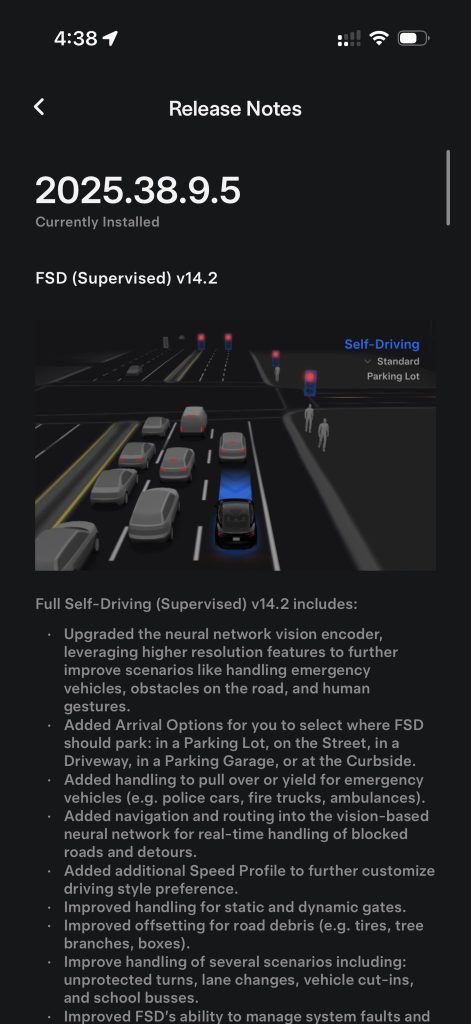
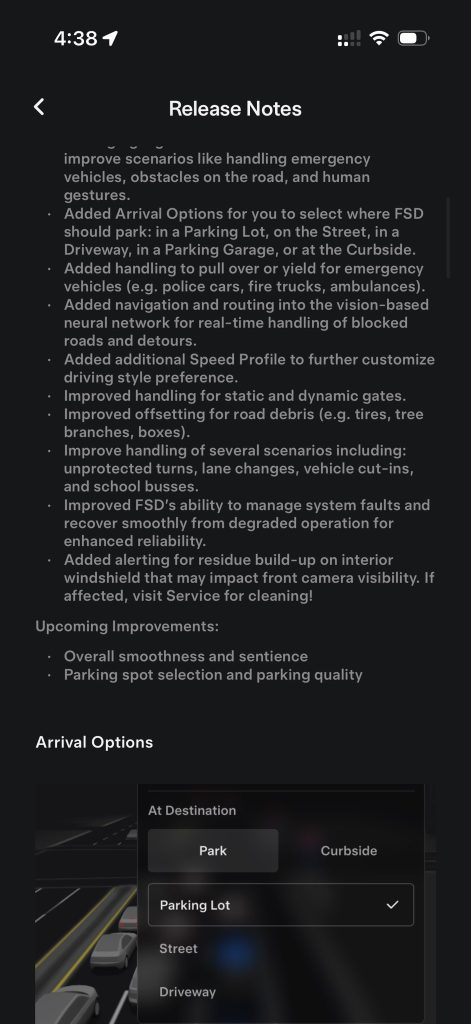
Release Notes
2025.38.9.5
Currently Installed
FSD (Supervised) v14.2
Full Self-Driving (Supervised) v14.2 includes:
- Upgraded the neural network vision encoder, leveraging higher resolution features to further improve scenarios like handling emergency vehicles, obstacles on the road, and human gestures.
- Added Arrival Options for you to select where FSD should park: in a Parking Lot, on the Street, in a Driveway, in a Parking Garage, or at the Curbside.
- Added handling to pull over or yield for emergency vehicles (e.g. police cars, fire trucks, ambulances.
- Added navigation and routing into the vision-based neural network for real-time handling of blocked roads and detours.
- Added additional Speed Profile to further customize driving style preference.
- Improved handling for static and dynamic gates.
- Improved offsetting for road debris (e.g. tires, tree branches, boxes).
- Improve handling of several scenarios including: unprotected turns, lane changes, vehicle cut-ins, and school busses.
- Improved FSD’s ability to manage system faults and improve scenarios like handling emergency vehicles, obstacles on the road, and human gestures.
- Added Arrival Options for you to select where FSD should park: in a Parking Lot, on the Street, in a Driveway, in a Parking Garage, or at the Curbside.
- Added handling to pull over or yield for emergency vehicles (e.g. police cars, fire trucks, ambulances).
- Added navigation and routing into the vision-based neural network for real-time handling of blocked roads and detours.
- Added additional Speed Profile to further customize driving style preference.
- Improved handling for static and dynamic gates.
- Improved offsetting for road debris (e.g. tires, tree branches, boxes).
- Improve handling of several scenarios, including unprotected turns, lane changes, vehicle cut-ins, and school buses.
- Improved FSD’s ability to manage system faults and recover smoothly from degraded operation for enhanced reliability.
- Added alerting for residue build-up on interior windshield that may impact front camera visibility. If affected, visit Service for cleaning!
Upcoming Improvements:
- Overall smoothness and sentience
- Parking spot selection and parking quality
News
Tesla Model X lost 400 pounds thanks to these changes
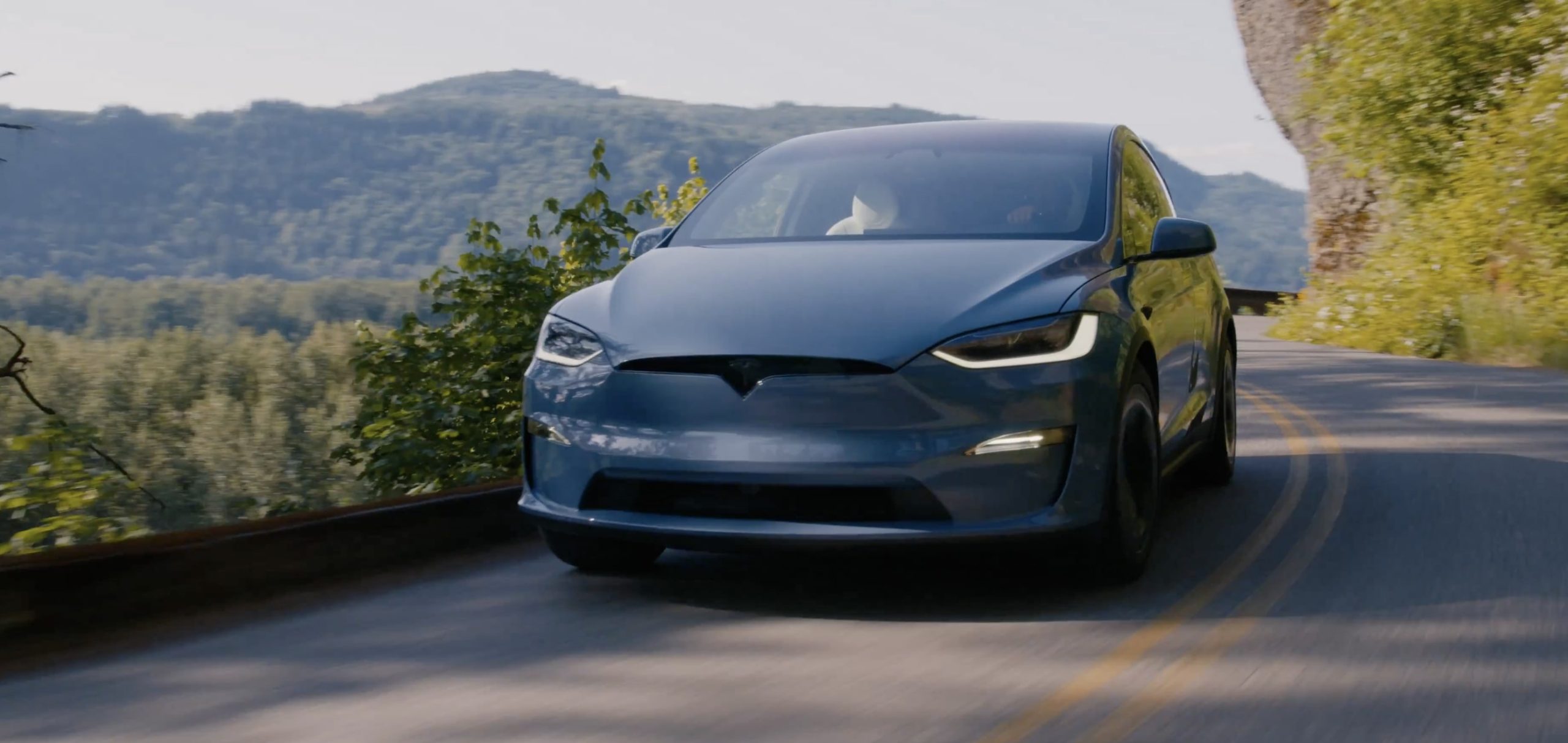
The Tesla Model X has always been one of the company’s most loved vehicles, despite its low sales figures, which can be attributed to its high price tag.
However, the Model X has been a signature item on Tesla’s menu of cars, most notably recognized by its Falcon Wing Doors, which are aware of its surroundings and open according to what’s around it.
But recent improvements to the Model X were looking slim to none, but it appears most of the fixes actually happened under the body, at least according to Tesla’s Vice President of Powertrain, Lars Moravy.
In a recent interview with Car and Driver, Moravy detailed all of the changes to the 2026 iteration of the vehicle, which was about 400 pounds lighter than it was originally. The biggest change is a modification with the rear motor, switching from an induction-type motor to a permanent-magnet design and optimizing the half-shafts, which shed about 100 pounds.
Tesla also got “almost 80 pounds out of the interior bits and pieces,” which “included making parts thinner, different manufacturing process choices, and incorporating airbag-deployment requirements into the headliner fabric,” the report said.
Additionally, the standard five-passenger, bench seat configuration saved 50 pounds by ditching pedestal mounting. This also helped with practicality, as it helped the seat fold flat. Engineers at Tesla also saved 44 pounds from the high-voltage wiring through optimizing the wiring from the charge-port DC/DC converter and switching from copper to aluminum wiring.
Tesla makes a decision on the future of its flagship Model S and Model X
Tesla also simplified the cooling system by reducing the number of radiators. It also incorporated Nürburgring cooling requirements for the Plaid variant, which saved nearly 30 pounds.
Many Tesla fans will be familiar with the megacastings, manufactured in-house by presses from IDRA, which also saves more than 20 pounds and boosts torsional stiffness by around 10 percent. Tweaks to the suspension also saved 10 pounds.
People were truly disappointed with what Tesla did with the Model S and Model X, arguing that the cars needed a more severe exterior overhaul, which might be true. However, Tesla really did a lot to reduce the weight of the vehicle, which helps increase range and efficiency. According to Grok, every 200 pounds removed adds between 7 and 15 percent to range estimations.
This makes sense considering the range estimations both increased by 7 percent from the Model X’s 2025 configuration to the 2026 builds. Range increased on the All-Wheel-Drive trim from 329 miles to 352 miles, while the Plaid went from 314 miles to 335 miles.
News
Tesla launches its new branded Supercharger for Business with first active station
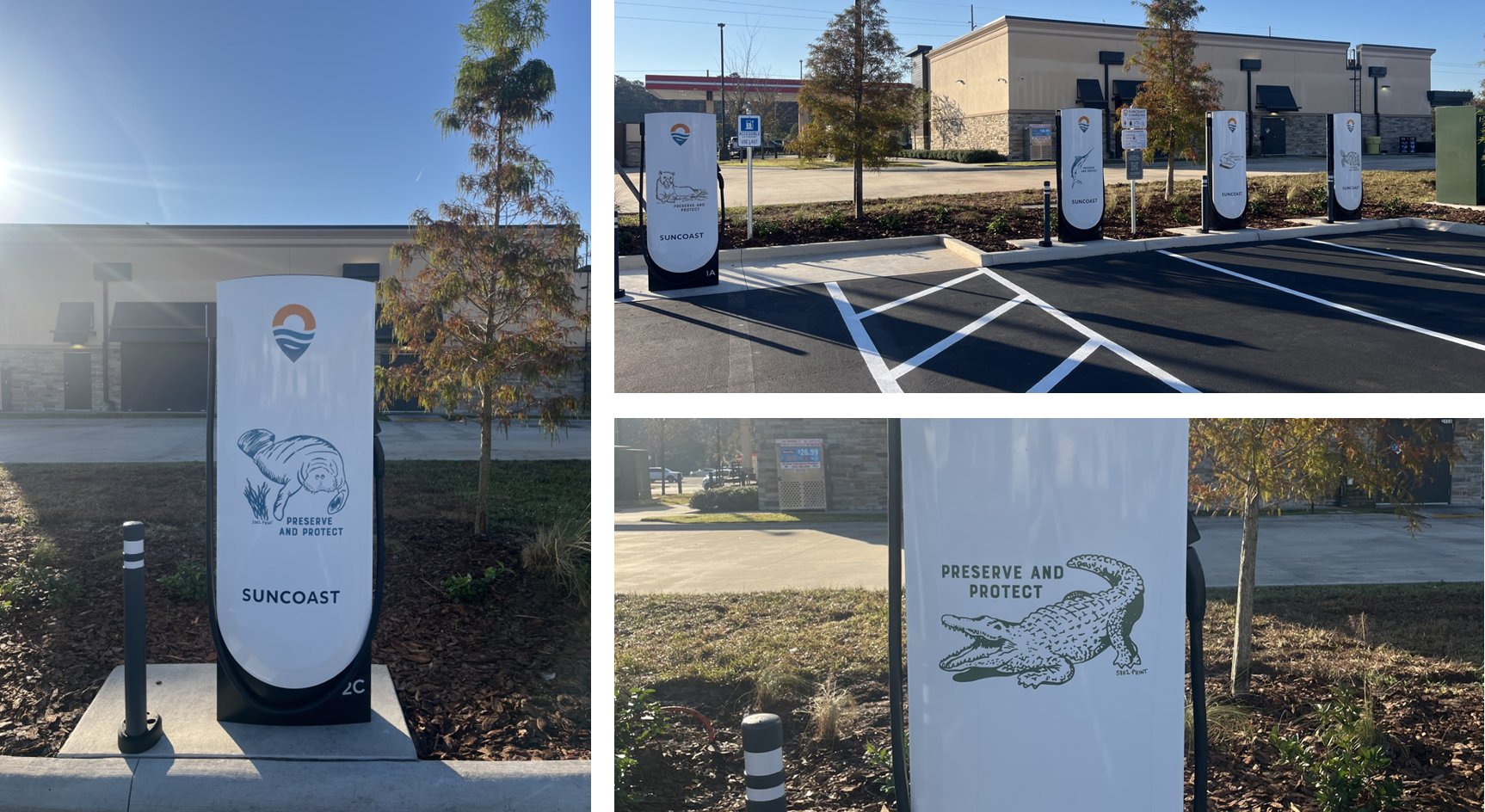
Tesla has officially launched its first branded Supercharger just months after initiating a new program that allows third-party companies to brand their own charging piles.
The site opened in Land O’ Lakes, Florida, and features eight V4 Supercharging stalls offering up to 325 kW of charging speed. It appears it was purchased by a company called Suncoast Credit Union. This particular branch is located Northeast of Tampa, which is on the Gulf of Mexico.
It features graphics of Florida animals, like alligators:
Here’s a video of the graphics being installed on the Tesla Superchargers at this site: https://t.co/oIfEPNZjAH pic.twitter.com/ENWakZ2qT9
— TESLARATI (@Teslarati) November 20, 2025
Tesla launched this program back in September, and it basically was a way to expand its Supercharger presence and also allow companies to pay for the infrastructure. Tesla maintains it. When it announced the “Supercharger for Business,” it said:
“Purchase and install Superchargers at your business. Superchargers are compatible with all electric vehicles, bringing EV drivers to your business by offering convenient, reliable charging.”
The program does a few things. Initially, it expands EV charging infrastructure and makes charging solutions more readily available for drivers. It can also attract people to those businesses specifically.
Tesla launches new Supercharger program that business owners will love
The chargers can also be branded with any logo that the business chooses, which makes them more personalized and also acts as an advertisement.
The best part is that the customers do not have to maintain anything about the Supercharger. Tesla still takes care of it and resolves any issues:
“We treat your site like we treat our sites. By providing you with a full-service package that includes network operations, preventative maintenance, and driver support, we’re able to guarantee 97% uptime–the highest in the industry.”
It appears the Superchargers will also appear within the in-car nav during routing, so they’ll be publicly available to anyone who needs to use them. They are still available to all EVs that have worked with Tesla to utilize its infrastructure, and they are not restricted to people who are only visiting the business.








